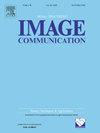Image blind denoising using dual convolutional neural network with skip connection
IF 2.7
3区 工程技术
Q2 ENGINEERING, ELECTRICAL & ELECTRONIC
引用次数: 0
Abstract
In recent years, deep convolutional neural networks have shown fascinating performance in the field of image denoising. However, deeper network architectures are often accompanied with large numbers of model parameters, leading to high training cost and long inference time, which limits their application in practical denoising tasks. In this paper, we propose a novel dual convolutional denoising network with skip connection (DCBDNet) for image blind denoising, which is able to achieve a desirable balance between the denoising effect and network complexity. The proposed DCBDNet consists of a noise estimation network and a dual convolutional neural network (CNN). The noise estimation network is used to estimate the noise level map, which improves the flexibility of the proposed model. The dual CNN contains two branches: a u-shaped sub-network is designed for the upper branch, and the lower branch is composed of the dilated convolution layers. Skip connections between layers are utilized in both the upper and lower branches. The proposed DCBDNet was evaluated on several synthetic and real-world image denoising benchmark datasets. Experimental results have demonstrated that the proposed DCBDNet can effectively remove Gaussian noise, spatially variant noise and real noise. With a simple model structure, our proposed DCBDNet still can obtain competitive denoising performance compared to the state-of-the-art image denoising models containing complex architectures. Namely, a favorable trade-off between denoising performance and model complexity is achieved.
基于跳跃连接的双卷积神经网络图像盲去噪
近年来,深度卷积神经网络在图像去噪领域表现出了惊人的性能。然而,深度网络结构往往伴随着大量的模型参数,导致训练成本高,推理时间长,限制了其在实际去噪任务中的应用。在本文中,我们提出了一种新的带跳跃连接的双卷积去噪网络(DCBDNet)用于图像盲去噪,它能够在去噪效果和网络复杂度之间达到理想的平衡。提出的DCBDNet由噪声估计网络和双卷积神经网络(CNN)组成。采用噪声估计网络对噪声级图进行估计,提高了模型的灵活性。双分支CNN包含两个分支:上分支设计u形子网络,下分支由扩展卷积层组成。在上层和下层分支中都使用层之间的跳过连接。在几个合成的和真实世界的图像去噪基准数据集上对所提出的DCBDNet进行了评估。实验结果表明,所提出的DCBDNet可以有效地去除高斯噪声、空间变异噪声和真实噪声。通过简单的模型结构,我们所提出的DCBDNet与包含复杂结构的最先进的图像去噪模型相比仍然可以获得具有竞争力的去噪性能。也就是说,在去噪性能和模型复杂性之间实现了良好的权衡。
本文章由计算机程序翻译,如有差异,请以英文原文为准。
求助全文
约1分钟内获得全文
求助全文
来源期刊

Signal Processing-Image Communication
工程技术-工程:电子与电气
CiteScore
8.40
自引率
2.90%
发文量
138
审稿时长
5.2 months
期刊介绍:
Signal Processing: Image Communication is an international journal for the development of the theory and practice of image communication. Its primary objectives are the following:
To present a forum for the advancement of theory and practice of image communication.
To stimulate cross-fertilization between areas similar in nature which have traditionally been separated, for example, various aspects of visual communications and information systems.
To contribute to a rapid information exchange between the industrial and academic environments.
The editorial policy and the technical content of the journal are the responsibility of the Editor-in-Chief, the Area Editors and the Advisory Editors. The Journal is self-supporting from subscription income and contains a minimum amount of advertisements. Advertisements are subject to the prior approval of the Editor-in-Chief. The journal welcomes contributions from every country in the world.
Signal Processing: Image Communication publishes articles relating to aspects of the design, implementation and use of image communication systems. The journal features original research work, tutorial and review articles, and accounts of practical developments.
Subjects of interest include image/video coding, 3D video representations and compression, 3D graphics and animation compression, HDTV and 3DTV systems, video adaptation, video over IP, peer-to-peer video networking, interactive visual communication, multi-user video conferencing, wireless video broadcasting and communication, visual surveillance, 2D and 3D image/video quality measures, pre/post processing, video restoration and super-resolution, multi-camera video analysis, motion analysis, content-based image/video indexing and retrieval, face and gesture processing, video synthesis, 2D and 3D image/video acquisition and display technologies, architectures for image/video processing and communication.
 求助内容:
求助内容: 应助结果提醒方式:
应助结果提醒方式:


